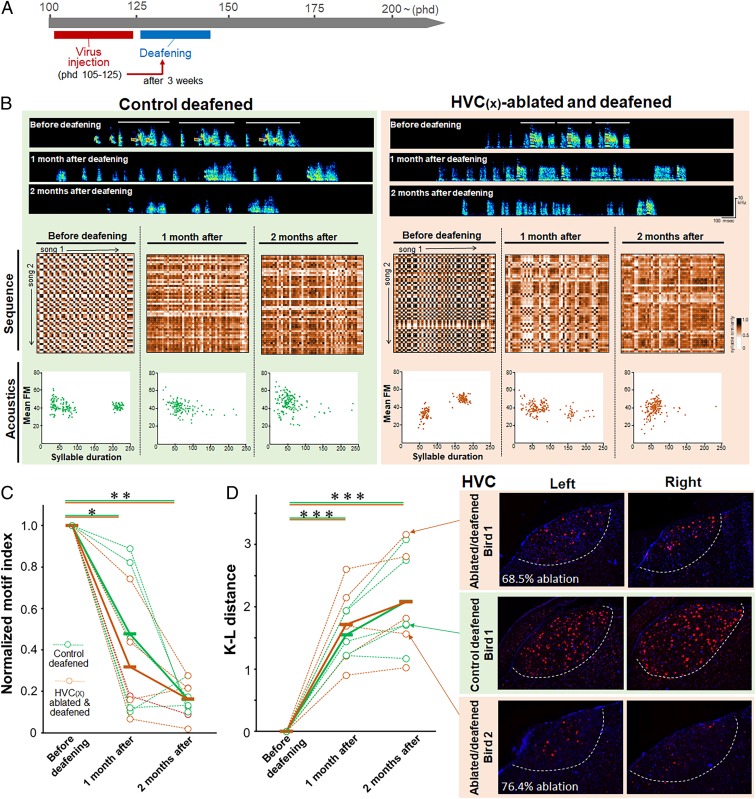Fig. 6.
Ablation of HVC(X) neurons does not alter song degradation after deafening in adult zebra finches. (A) Timeline of HVC(X) ablation and deafening in the adult stage. (B) Deafening-induced degradation of the syllable sequence and acoustics in a control (green background) and HVC(X)-ablated (brown background) adult birds. (C) Similar rates of deafening-induced degradation of song motif structure between control and HVC(X)-ablated adult birds (n = 5 for each group; paired t test: *P < 0.05, **P < 0.01). The green and brown lines represent control and HVC(X)-ablated birds, respectively. The dotted and solid lines represent individual and average values, respectively. (D, Left) Similar rates of acoustic degradation after deafening between control and HVC(X)-ablated birds, as calculated by the K–L distance (n = 5 for each group; paired t test: ***P < 0.001). (D, Right) Remaining HVC(X) neurons in 3 representative birds [a control and 2 HVC(X)-ablated birds], visualized by NTS (red) and DAPI (blue). The white dotted lines represent the border of HVC.

